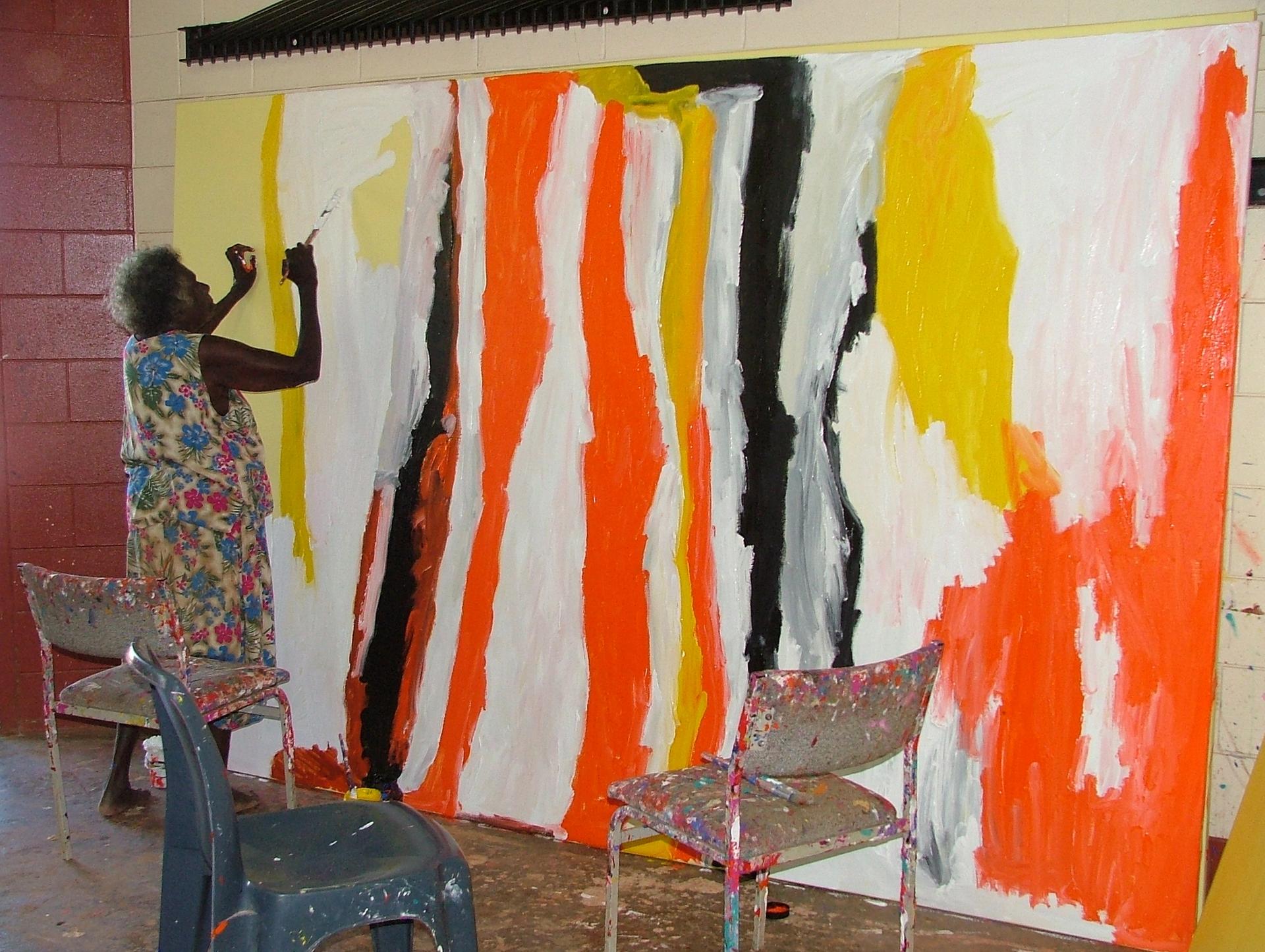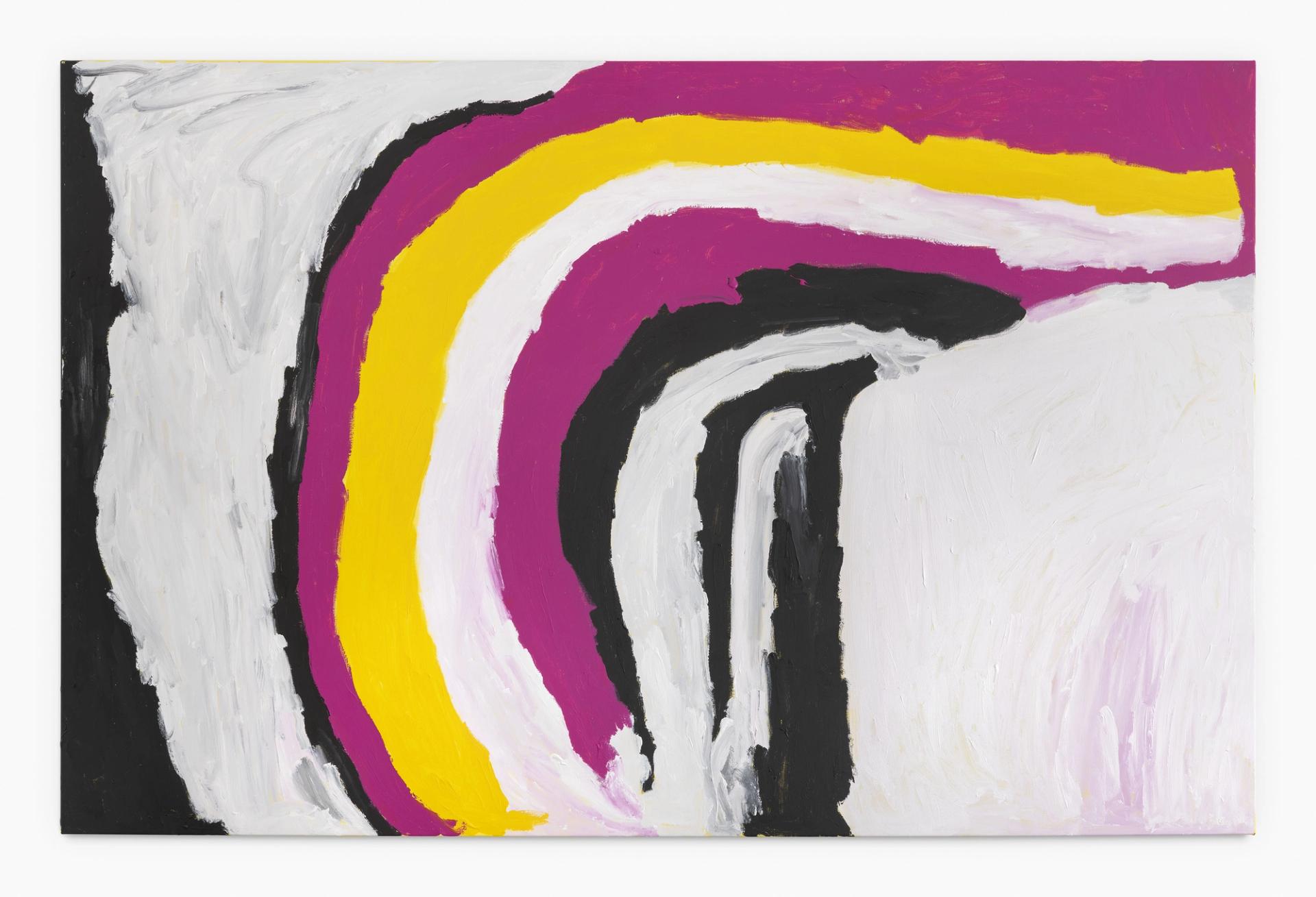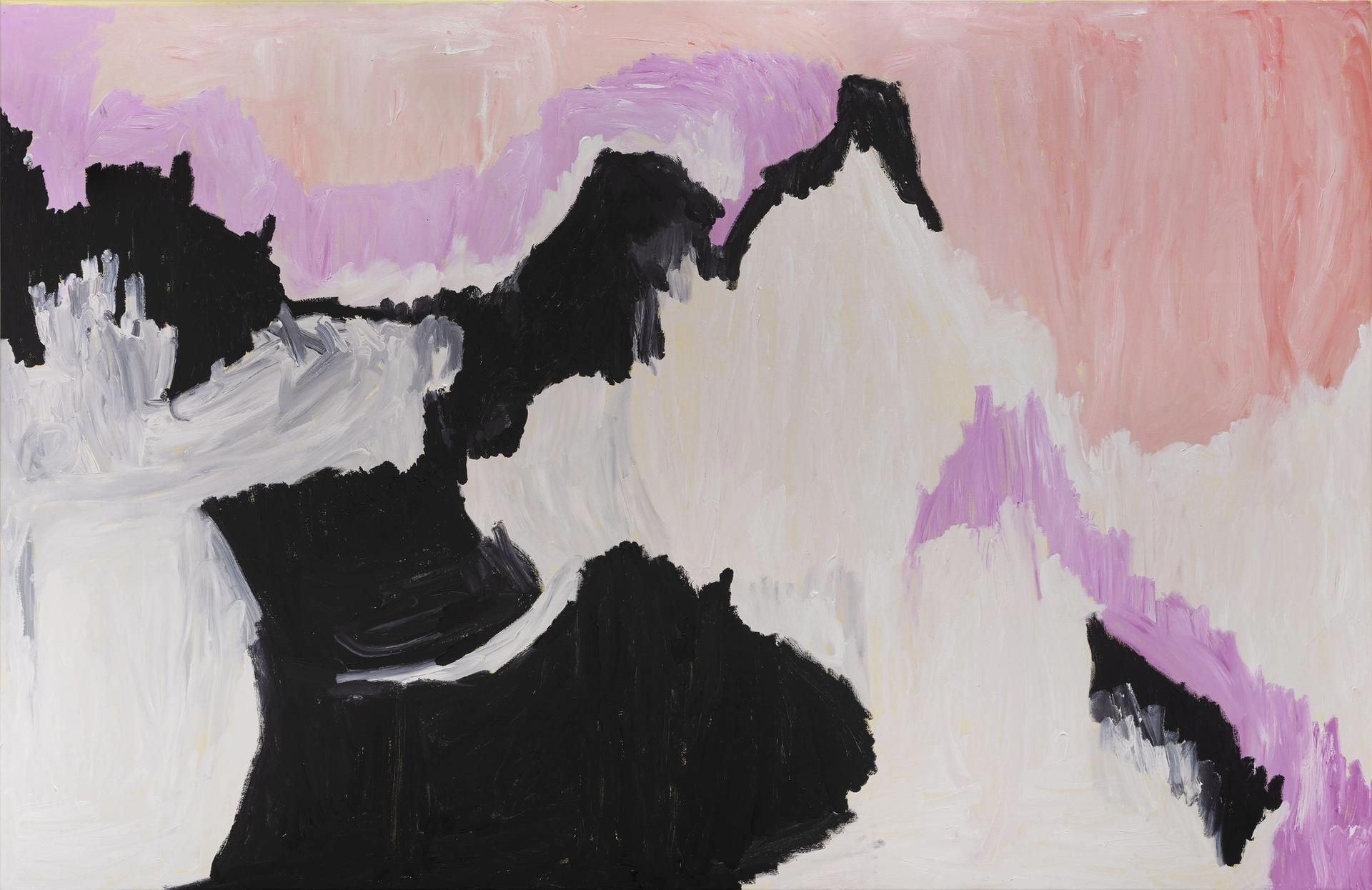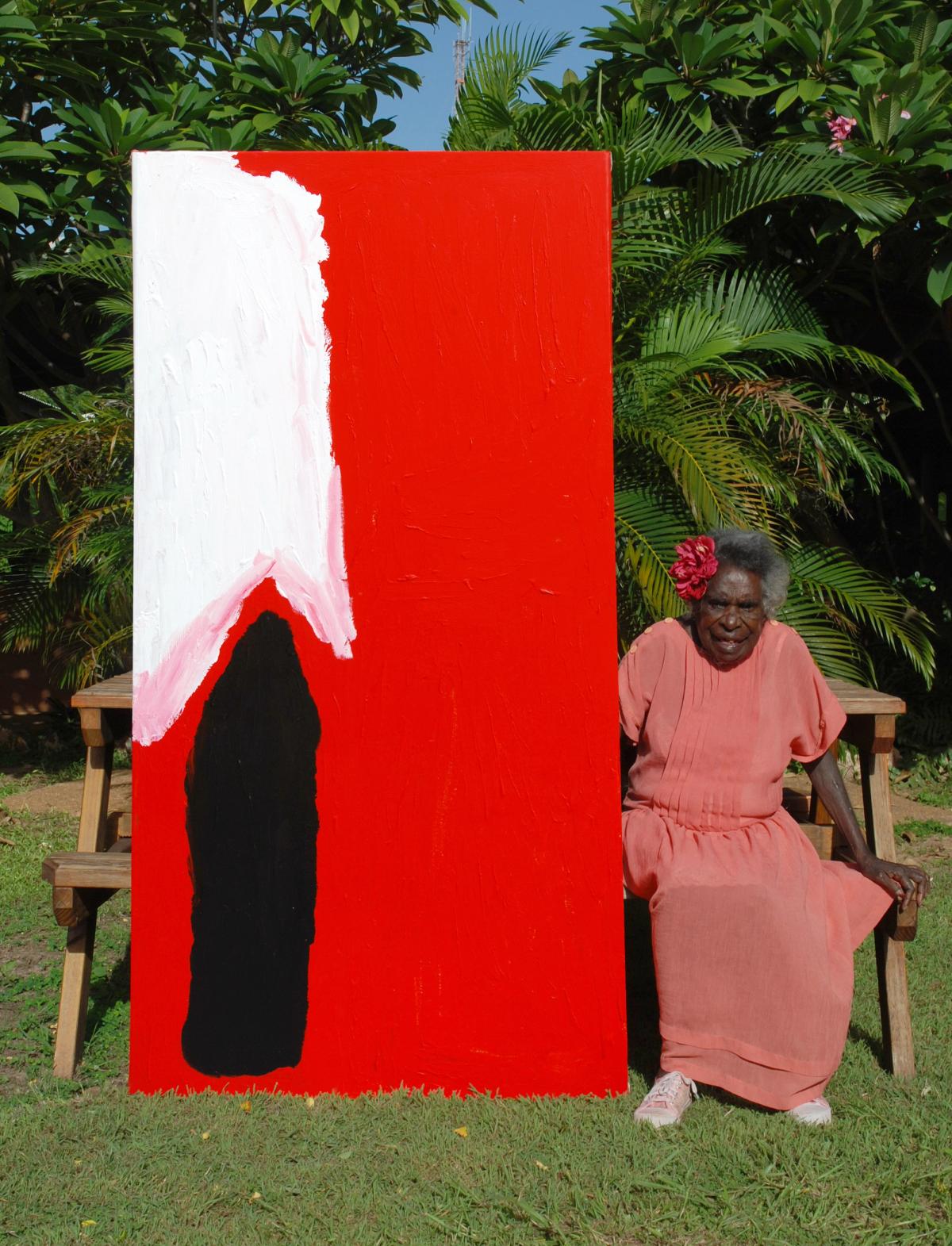The late Aboriginal artist Mirdidingkingathi Juwarnda Sally Gabori began painting at age 81 as part of an occupational therapy programme, achieving fame for her vivid compositions that honour her Kaiadilt culture with abstract topological references to territories in the Bentinck archipelago. A retrospective of Gabori’s work at the Fondation Cartier pour l’art contemporain in Paris features more than 30 paintings that chronicle her short but prolific career, which has been widely celebrated but also punctuated by controversy and concern around the exploitation of Indigenous artists.
Gabori was born in 1924 in Mirdidingki, an area on the south of Bentinck Island, and first picked up a paintbrush in 2005, when she was enrolled in a workshop at the Mornington Island Arts and Crafts Centre in Queensland, a centre that supports Aboriginal artists with the production and marketing of their work. Gabori began creating striking paintings that boldly captured the spirit of her native land, and was subsequently “discovered” by Brett Evans, the former chief executive of the centre.
In the ten years that followed, before her death in 2015, several institutions such as the National Gallery of Australia and the Musée du Quai Branly acquired Gabori’s work, and in 2013 she was included in the Venice Biennale. While Evans was instrumental in advancing her career, in February this year he pleaded guilty to 35 charges for illegally selling 190 paintings from the centre, most of them by Gabori, with invoices indicating that he pocketed A$425,378 (around $274,000) for the sale of the works under the pretext that the sales would partially benefit the artists and the art centre.

Sally Gabori, Mornington Island Arts and Crafts Centre, 2008-2012. © The Estate of Sally Gabori. Photo: © Inge Cooper.
Evans was sentenced to four years and six months imprisonment with a non-parole period of 20 months and has been ordered to repay the centre, although many of the works, which were sold to private collectors, remain missing. The case follows years-long protests from Aboriginal groups urging the Australian government to better enforce laws that aim to protect vulnerable Aboriginal artists from opportunistic dealers as the market for Aboriginal art grows exponentially.
The Fondation Cartier’s survey is the first major exhibition devoted to the artist to be organised outside of Australia, and it does not address the Evans case, which curators found to be a “remote” issue that has been mostly confined to Australian media, according to the curator Juliette Lecorne. Rather, the show opts to focus on Gabori’s artistic legacy and the few first-hand testimonies of her work that exist, which were gathered in close collaboration with her descendents and community.

Sally Gabori, Thundi – Big River (2010). Collection David Gyngell and Leila McKinnon, Sydney, Australia. © The Estate of Sally Gabori. Photo: © Mark Pokorny.
“Evans went to jail during the preparation of the exhibition, so we were following the trial and the case is obviously a tragedy for her estate and descendants,” Lecorne says. “We have been extremely careful of the provenances of the work in her show to ensure that we are supporting the family and that none of the pieces are linked to the trial.”
The show contains several loans from institutions such as the National Gallery of Australia and the Art Gallery of New South Wales, as well as private collections. Organising an exhibition dedicated to a non-living artist with such a brief career posed several challenges, and the curators spent around two and a half years gathering Gabori’s archive and working with her family. The artist, whose Kaiadilt community was forcibly exiled from Bentinck Island to Mornington Island in the 1940s by Presbyterian missionaries, spoke only Kaiadilt fluently and seldom contextualised her own work.
“I do believe that Sally’s painting was a way to transmit the Kaiadilt story to the next generations, even to her own daughters with whom she could barely communicate, as they spoke only English,” Lecorne says. “She knew sensitively she was digging into really spiritual and emotional resources in her practice.”

Sally Gabori, Thundi (2010). Private collection, Melbourne, Australia. © The Estate of Sally Gabori. Photo: © Simon Strong.
Because of these limitations, the exhibition aims to “show the great artist that Gabori was rather than present her solely as an Aboriginal woman; we were radically minimal in terms of the hanging and assumed a very minimal role in terms of curatorial voice”, Lecorne says. Rather than filling the galleries with text, the foundation has launched a comprehensive website with further explanations on Gabori’s background and practice as well as several digitised archival documents. “The exhibition itself is beautiful but ephemeral and we needed a tool to tell the history of the Kaiadilt people and their exile, so that audiences can learn about or even reconcile their own stories through these documents.”
Curators also hope that the exhibition offers new perspectives on Aboriginal art, whose complex cosmology and diverse range of pictorial expression remains understudied in comparison to non-Indigenous art movements. “There is such a misunderstanding in the Western world of how we perceive Aboriginal art, and artists like Sally especially are beyond that,” Lecorne adds.
- Mirdidingkingathi Juwarnda Sally Gabori, until 6 November at the Fondation Cartier pour l’art contemporain, Paris


